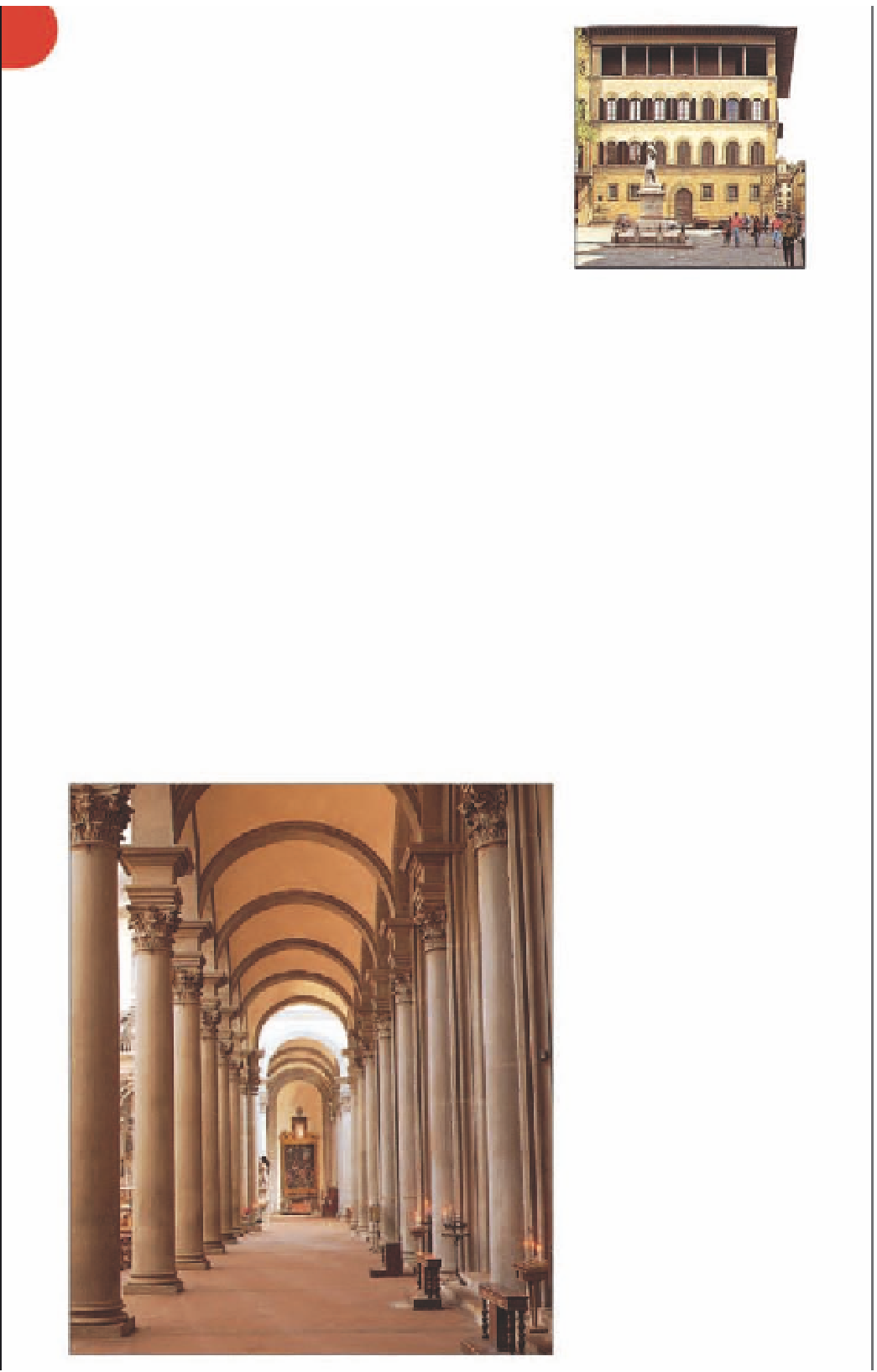Travel Reference
In-Depth Information
Santo Spirito
1
Piazza di Santo Spirito.
Map
3 B2 (5
B4).
coffered ceiling. It was
designed by Simone del
Pollaiuolo, more commonly
known as Cronaca, in 1491.
The sacristy adjoining the
vestibule was designed by
Giuliano da Sangallo in 1489.
2
D.
Tel
055 21 00 30.
#
9:30am-12:30pm, 3-5:30pm
Thu-Sat & Mon-Tue, 3-5:30pm Sun.
¢
Wed.
^
The Augustinian foundation of
this church dates from 1250.
The present building has an
unfinished 18th-century façade,
which dominates the northern
end of Piazza di Santo Spirito.
Brunelleschi designed the
church in 1435, but it was not
completed until the late 1400s,
well after his death.
Inside, the harmony of the
proportions has been some-
what spoiled by the elaborate
Baroque baldacchino and the
High Altar, which was finished
in 1607 by Giovanni Caccini.
The church has 38 side altars,
decorated with 15th- and 16th-
century Renaissance paintings
and sculpture, among them
works by Cosimo Rosselli,
Domenico Ghirlandaio and
Filippino Lippi. The latter
painted a
Madonna and Child
(1466) for the Nerli Chapel in
the south transept.
In the north aisle, a door
beneath the organ leads to
a vestibule with an ornate
Cenacolo di
Santo Spirito
2
Piazza di Santo Spirito 29.
Map
3 B1
(5 B4).
Tel
055 28 70 43.
#
The façade of Palazzo Guadagni
Apr-Nov: 9am-2pm Tue-Sun;
Dec-Mar: 10:30am-1:30pm Sat.
¢
Piazza di
Santo Spirito
3
Map
3 B2 (5 B5).
1 Jan, Easter Sun, 1 May,
15 Aug, 25 Dec.
&
^
8
2
D.
All that survives of the
monastery that stood next to
Santo Spirito is the refectory
(cenacolo)
, now a small
museum. Inside is a fresco,
The Crucifixion
(1360-65),
attributed to the followers of
Andrea Orcagna and his
brother Nardo di Cione. In a
city that has a wealth of
Renaissance art, this is a rare
and beautiful example of
High Gothic religious work.
The Fondazione Salvatore
Romano, a collection of
11th-century Romanesque
sculpture, is displayed in
the refectory.
(
2nd (Antiques) & 3rd (Organic)
Sun of month.
This part of Florence is best
appreciated by wandering
around the square and its
market, looking at the many
furniture restorers' workshops
and medieval palazzi. The
biggest house in the square is
the Palazzo Guadagni at No.
10, on the corner with Via
Mazzetta. It was built around
1505, probably to the designs
of Cronaca. The windows have
distinctive stone surrounds
with tear-drop shaped key-
stones. The top floor forms an
open loggia, the first of its kind
to be built in the city. The
loggia set a fashion among
16th-century Florentine aristo-
crats, who incorporated the
design into their own palazzi.
Via Maggio
4
Map
3 B2 (5 B5).
Opened in the mid-13th
century, this road became a
fashionable residential area
after the Medici Grand Dukes
moved to the Palazzo Pitti in
1550
(see pp120-21)
. It is lined
with 15th- and 16th-century
palazzi, such as the Palazzo
Ricasoli at No. 7, and antique
shops. Via Maggio runs into
Piazza di San Felice, where a
plaque marks the Casa Guidi.
The English poets Elizabeth
and Robert Browning rented
an apartment here after
eloping in 1847. Inspired by
Tuscan art and landscape, this
is where they wrote much of
their best poetry.
Colonnaded aisle in Santo Spirito







































